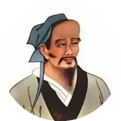2 Functions of 10 Important Acupuncture Points 1. Zu San Li (Stomach 36) Function: 1. Strengthens the spleen and stomach; 2. Promotes metabolism and strengthens the body; 3. Enhances endocrine function and boosts immunity. Stimulating Zu San Li has preventive and therapeutic effects on diseases of the digestive system, nervous system, blood system, circulatory system, endocrine system, urinary system, and reproductive system, especially for digestive system diseases, where the effects are more pronounced.
Indications:
Gastritis, chronic gastritis, gastric ulcers, gastric prolapse, gastric spasms, indigestion, hepatitis; neurasthenia, epilepsy, insomnia, headaches, anemia, hemiplegia, hypertension, hypotension, arteriosclerosis; coronary heart disease; diabetes, enuresis; impotence, premature ejaculation, nocturnal emissions, irregular menstruation, excessive menstruation; colds; knee arthritis, lower limb arthritis, etc.
2. Guan Yuan (Conception Vessel 4) Function: 1. Nourishes the root and stabilizes the source. 2. Tonifies the kidney and strengthens Yang, regulates menstruation, clears heat, and promotes diuresis. This point nourishes the kidneys, stabilizes the foundation, regulates Qi, and supports Yang, playing a key role in reproduction and vital energy. It is where men store essence and women store blood. 3. Tonifies deficiency and stabilizes the foundation. This point enhances reproductive function, boosts immunity, prevents aging, and treats various deficiencies.
Indications:
Impotence, premature ejaculation, nocturnal emissions, irregular menstruation, cervical erosion, uterine prolapse, pelvic inflammatory disease, infertility, enuresis, urinary retention, urinary incontinence, cystitis, nephritis, urethritis, genital eczema; dysentery, hernia, prolapse, hypertension, diabetes; forgetfulness, neurasthenia; collapse, physical weakness.
3. Zhong Wan (Conception Vessel 12) Function: 1. Regulates the spleen and stomach; 2. Reduces counterflow and resolves stagnation. This point regulates the stomach and middle jiao, tonifies deficiency, benefits Qi, transforms dampness, and stops vomiting.
Indications: Gastric spasms, gastric ulcers, gastric prolapse, gastric distension, indigestion, vomiting, halitosis, enteritis, duodenal ulcers, dysentery, appendicitis, constipation, hepatitis, cholecystitis, jaundice, hypertension, angina, heat stroke, epilepsy, hysteria, neurasthenia, insomnia, cough, asthma, hematemesis, uterine prolapse, irregular menstruation. This point is particularly important for treating digestive system diseases and is one of the key points for various gastric disorders.
4. Nei Guan (Pericardium 6) Function: 1. Regulates Qi and invigorates blood; 2. Calms the mind and stabilizes the spirit.
Indications: Angina, myocarditis, rheumatic heart disease, bradycardia, arrhythmia; shock, coma, syncope, motion sickness, insomnia, hysteria, epilepsy, mental illness; gastric diseases, gastric spasms, vomiting, hiccups; diaphragm spasms, pregnancy sickness, hypotension, absence of pulse, etc. This point is particularly effective for various heart diseases and mental disorders.
5. He Gu (Large Intestine 4) Function: 1. Clears heat and releases the exterior; 2. Relaxes tendons and dispels wind, promotes digestion. Its main function is to clear heat and relieve pain. Indications: Colds, coughs, headaches, trigeminal neuralgia, facial nerve paralysis, epilepsy, schizophrenia; enteritis, dysentery, hemorrhoids, pediatric prolapse, toothache, rhinitis, epistaxis; tonsillitis, conjunctivitis, deafness, acute shoulder rheumatism, finger spasms, difficult labor, measles, excessive sweating, aphasia, etc. It is especially effective for headaches caused by colds. 6. Yong Quan (Kidney 1) Function: 1. Clears the mind and awakens the spirit; 2. Calms the mind and stabilizes the spirit; 3. Clears heat and disperses wind.
Regular cupping on this point can guide the kidney’s empty fire and the turbid Qi of the upper jiao downward, and has the effects of soothing the liver, brightening the eyes, and calming the throat and mind. It can lower blood pressure, promote local blood circulation, and help prevent age-related numbness and edema.
Indications: Shock, coma, dizziness, heat stroke, forgetfulness, headaches, trigeminal neuralgia; epilepsy, hysteria, mental illness, pediatric convulsions; cerebral hemorrhage, functional paralysis, functional aphasia, facial spasms, hypertension, angina, myocarditis, tonsillitis, pharyngitis, cough, epistaxis, jaundice, stomach pain, edema, impotence, low back pain, knee pain, chest pain, vision loss, measles, hernia, etc.
7. Yang Ling Quan (Gallbladder 34) Function: 1. Promotes circulation and relieves stiffness; 2. Opens the meridians and benefits the joints; 3. Clears heat and benefits the gallbladder.
Indications: Diseases of the lower limbs and lower back, such as knee arthritis, ankle arthritis, sciatica, peroneal nerve paralysis, phlebitis, rheumatoid arthritis, low back pain, etc. It is also a key point for treating liver and gallbladder diseases, with good effects on hepatitis, cholecystitis, and jaundice. Additionally, it has therapeutic effects on hypertension, epilepsy, enuresis, and athlete’s foot.
8. Feng Chi (Gallbladder 20) Function: 1. Clears the heart and brightens the eyes; 2. Clears heat and disperses wind; 3. Opens the orifices and promotes circulation.
Indications: Cerebral thrombosis, concussion, meningitis, forgetfulness, epilepsy, mental illness, tension headaches, insomnia, dizziness, hyperthyroidism, stiff neck, glaucoma, night blindness, optic neuritis, retinitis, rhinitis, pharyngitis, hypertension, tinnitus, malaria, deafness, etc.
9. Yin Men (Kidney 10) Function: 1. Opens the meridians and promotes circulation; 2. Unblocks the tendons.
Indications: Low back pain, sciatica, herniated disc, lower limb myofascial pain, paralysis.
10. Ming Men (Governor Vessel 4) Function: 1. Nourishes the kidneys and regulates menstruation; 2. Regulates the intestines and prevents prolapse.
Indications: Nocturnal emissions, impotence, irregular menstruation, dysmenorrhea, enuresis, low back pain, headaches, tinnitus, hemorrhoids, constipation.


 Click abovefor free follow…
Click abovefor free follow… 

